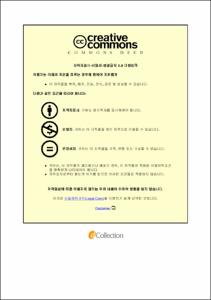Full metadata record
| DC Field | Value | Language |
|---|---|---|
| dc.contributor.advisor | Kim, Jong Hyun | - |
| dc.contributor.author | Kim, Jong Bum | - |
| dc.date.accessioned | 2017-05-10T08:51:38Z | - |
| dc.date.available | 2015-07-19T00:00:00Z | - |
| dc.date.issued | 2015 | - |
| dc.identifier.uri | http://dgist.dcollection.net/jsp/common/DcLoOrgPer.jsp?sItemId=000002066749 | en_US |
| dc.identifier.uri | http://hdl.handle.net/20.500.11750/1407 | - |
| dc.description.abstract | This study deal with validation of fitts’ law with stroke patients’ reaching task. Fitts’ Law is a linear re-lationship between movement time from start position to target position and Index of Difficulty (ID). ID is consisted of distance from start position to target position (A) and target width (W). Fitts’ Law is a one-dimensional model of reaching movement, is commonly applied to two-dimensional reaching movement. By using fitts’ law, it is possible to indicate the performance of reaching movement quantitatively. If fitts’ law can be applied to stroke patients, it is easy to evaluate their reaching movement. It is possible to know intuitively by comparing between before therapy and after therapy, therefore it is comfortable method to assess stroke patients’ reaching performance. It has advantage that therapy and assessment can be done at the same time by changing ID. Also, there are various possible targets in same ID in order to provide person-alized therapy to patients and the interest subjects and prevent the feeling of boredom and learning effect. ⓒ 2015 DGIST | - |
| dc.description.tableofcontents | Ⅰ. INTRODUCTION 1-- 1.1 Background 1-- 1.2 Fitts’ Law 3-- 1.2.1 Extending Fitts’ law to two dimensional space 3-- 1.3 Goal of the study 4-- Ⅱ. METHOD 5-- 2.1 Participants 5-- 2.2 Apparatus 5-- 2.2.1 Haptic Master 5-- 2.2.2 Trunk fixed Chair 7-- 2.3 Experimental Protocol 7-- 2.4 Data Analysis 8-- Ⅲ. RESULT 9-- 3.1 Healthy Subjects 9-- 3.1.1 Validation of Fitts’ Law 9-- 3.1.2 Difference among directions 11-- 3.2 Stroke Patients 13-- 3.2.1 Change of r^2 as experiment was repeated 13-- 3.2.2 Change of r^2 along directions 18-- 3.2.3 Change of movement time along directions 22-- Ⅳ. DISCUSSION 26-- 4.1 Healthy Subjects 26-- 4.2 Stroke Patients 26-- Ⅴ. CONCLUSION 31 |
- |
| dc.format.extent | 35 | - |
| dc.language | eng | - |
| dc.publisher | DGIST | - |
| dc.subject | reaching task | - |
| dc.subject | Fitts’ Law | - |
| dc.subject | robot-aided | - |
| dc.subject | rehabilitation | - |
| dc.subject | stroke | - |
| dc.subject | 피츠의 법칙 | - |
| dc.subject | 도달운동 | - |
| dc.subject | 로봇기반 | - |
| dc.subject | 재활 | - |
| dc.subject | 뇌졸중 | - |
| dc.title | Validation of Fitts' Law with stroke patients' reaching task ; potential application in robot-aided upper limb rehabilitation | - |
| dc.title.alternative | 뇌졸중 환자의 도달 운동을 통한 피츠의 법칙 검증; 로봇 기반 상지 재활의 가능성 있는 응용 | - |
| dc.type | Thesis | - |
| dc.identifier.doi | 10.22677/thesis.2066749 | - |
| dc.description.alternativeAbstract | 본 논문은 뇌졸중 환자의 도달 운동을 통한 피츠의 법칙 검증을 다룬다. 피츠의 법칙은 난이도 지수(ID, Index of Difficulty)와 시작점으로부터 목표점까지 움직이는데 소요되는 시간 사이의 관계를 표현한 1 차 방정식으로, ID 는 시작점으로부터 목표점까지의 거리(A)와 목표점의 크기(W)의 함수로 이루어져있다. 피츠의 법칙은 1 차원에서 도달 운동(reaching movement)를 표현한 것인데, 후속 연구들에 의해 2 차원 평면에서의 도달 운동으로 확정되어 적용되는 것으로 알려져 있다. 피츠의 법칙을 사용함으로써 도달 운동에 대한 정량적인 평가가 가능하고, 피츠의 법칙이 환자에게 적용 된다면 도달 운동에 대한 평가를 쉽게 할 수 있을 것이다. 따라서 치료 전과 후의 상태 비교도 쉽게 될 것이고, 도달 운동을 사용한 평가가 진행됨으로 평가와 동시에 치료가 가능하다는 장점을 가진다. A 와 W 에 의해 ID 가 변화될 수 있으므로 같은 프로토콜에서 다양한 난이도를 가진 목표점을 제공해줄 수 있기 때문에 환자 맞춤형 치료를 제공해줄 수 있고 더불어 동기부여, 학습효과 방지 등과 같은 부가적인 효과도 기대할 수 있을 것이다. ⓒ 2015 DGIST | - |
| dc.description.degree | Master | - |
| dc.contributor.department | Robotics Engineering | - |
| dc.contributor.coadvisor | Jang, Sung Ho | - |
| dc.date.awarded | 2015. 8 | - |
| dc.publisher.location | Daegu | - |
| dc.description.database | dCollection | - |
| dc.date.accepted | 2015-07-19 | - |
| dc.contributor.alternativeDepartment | 대학원 로봇공학전공 | - |
| dc.contributor.affiliatedAuthor | Kim, Jong Bum | - |
| dc.contributor.affiliatedAuthor | Kim, Jong Hyun | - |
| dc.contributor.alternativeName | 김종범 | - |
| dc.contributor.alternativeName | 김종현 | - |
| dc.contributor.alternativeName | 장성호 | - |
- Files in This Item:
-
 기타 데이터 / 1.64 MB / Adobe PDF
download
기타 데이터 / 1.64 MB / Adobe PDF
download
- Appears in Collections:
- Department of Robotics and Mechatronics Engineering Theses Master



